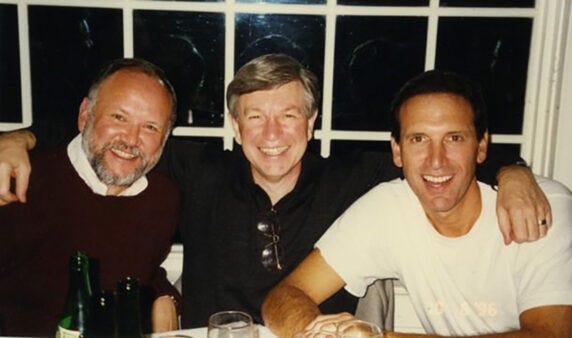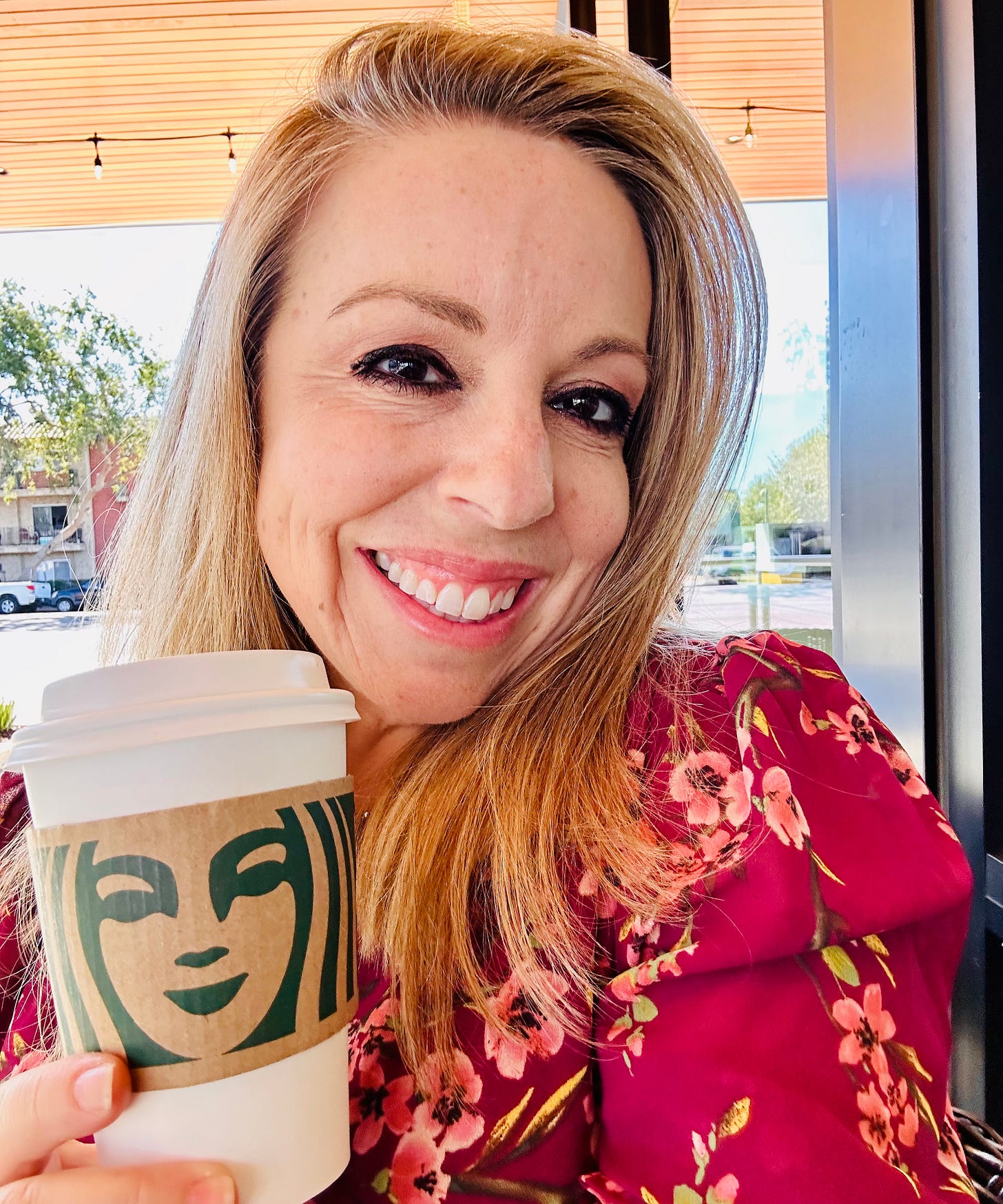Welcome to the first edition of The GrowUp Leadership Corner! In this newsletter, I will be spotlighting the leadership styles of prominent leaders and their founding teams through the lens of the G-R-O-W framework from my book, GrowUp. My hope is that these insights inspire reflection on your own leadership journey and the styles of those you collaborate with.
Substack is buzzing these days, so if you find value in what you read, I’d love for you to share it with others and invite them to follow along.
Now, without further ado… let’s dive into our first feature: Starbucks.
—-
I am so mad at Starbucks right now. I was already upset when the location near my house closed for a few months, but now that it’s re-opened, I’m even more frustrated. The remodel—the “new & improved version”—sucked the soul out of the experience for me. What once was a lively, modern space, perfect for meeting friends or working with a little ambient noise and people-watching, now feels sterile. The place once deemed the “third place” now feels like no place I want to spend time at all.
You may think I’m being dramatic, but you must understand my multi-decade love affair with Starbucks. It’s the place I seek out in any city. I go there so often that when my now-14-year-old daughter was a baby, she cried when I took her to a “not-Starbucks” coffee shop. Starbucks is part of my life, my weekend routine, my workday, and sometimes even my creative process.
So here I am, "smad" about the whole thing, hoping that new CEO Brian Niccol (formerly of Chipotle) will fix it.
Why have I had such an affinity for Starbucks? Beyond the coffee, it’s the story. I’ve read “Pour Your Heart Into It” countless times and recently listened to the Acquired podcast featuring Howard Schultz. His story is the stuff of entrepreneurial legend, and his leadership journey is one I’ve been observing from afar for most of my startup career.
Today, I’m breaking down Starbucks through the lens of my GrowUp framework, putting the spotlight on Schultz, his leadership, and the team he built around him. We’ll explore how Schultz embodied the superpowers of a Connector with some Innovator sprinkled in, and how the team he assembled helped take Starbucks from a single store selling coffee beans to a global powerhouse.
Howard Schultz: The Quintessential Connector and Innovator
Howard joined Starbucks in 1982 as head of marketing when the company was opening its fourth store in Seattle. At the time, Starbucks was only selling coffee beans, and their main supplier was Peet’s Coffee. There was no brewed coffee, and certainly no "Starbucks experience." It wasn’t until a trip to Italy that Schultz discovered the concept of coffee culture, where cafes were community hubs for conversation and connection. He immediately saw the potential to bring this experience to America, but the original Starbucks founders weren’t sold on the idea.
Undeterred, Schultz tested the concept in a single store, and what he observed was magical: customers lingering, engaging with the staff and each other. This human connection was the key to what Starbucks would become. Schultz’s ability to connect with both customers and employees helped shape Starbucks' identity. It was always about more than coffee—it was about the experience. This Connector superpower became central to how Schultz built the brand.
The idea to transform Starbucks from a simple coffee bean seller into a full-scale experiential brand—a place for people to gather, socialize, and connect over coffee—was a pioneering move. His relentless drive to expand, think bigger, and constantly reimagine the brand reflects the mindset of an Innovator.
The Role of Connection in Starbucks' Growth
Schultz didn’t just connect with customers—he also deeply understood the importance of connecting with his team. His leadership was rooted in empathy, and he believed in investing in his people. From offering healthcare to part-time employees to stock options through the Bean Stock program, Schultz built a culture where employees, or “partners,” were at the heart of the company. This wasn’t just lip service. Starbucks employees were empowered to make decisions that improved the customer experience. One such example is the now iconic practice of writing customer names on cups, which started as a way to manage orders and became a beloved part of the Starbucks experience.
The Three Leaders: Connector, Builder, and the Soul of Starbucks
Howard Schultz couldn’t build Starbucks alone. In 1989, he brought on Howard Behar, who would eventually become President of Starbucks North America and was widely regarded as the soul of the company. Behar was as much of a Connector as Schultz, with a servant leadership mindset that complemented Schultz’s visionary leadership. Behar was also part Persuader, given his confrontational approach, challenging Schultz and others to think differently and ensuring that people’s voices were heard. Together, Schultz and Behar scaled the company from 28 stores to over 400 by the time Behar became President of North America in 1995.
Behar's impact on Starbucks’ culture cannot be overstated. His famous quote, “We’re not in the coffee business serving people, we’re in the people business serving coffee,” encapsulates his leadership style. He helped institutionalize the philosophy that Starbucks' success was rooted in human connection, both with customers and employees.
But scaling Starbucks required more than just connection. It needed structure, and that’s where Orin Smith, the Builder, came in. Joining as CFO in 1990 and serving as CEO from 2000 to 2005, Smith brought financial discipline and strategic planning to the company, helping expand it from 45 stores to over 10,000 by the time he stepped down as CEO in 2005. Nicknamed "the tortoise" for his methodical approach, Smith balanced Schultz’s fast-paced, visionary style and Behar’s people-first mindset. Together, this trio—known internally as "H2O"—created a powerful synergy that fueled Starbucks’ rapid yet thoughtful growth.
Innovation and Blind Spots
While Schultz is often praised for his vision and leadership, he also had notable blind spots. One of his greatest challenges was trusting others to uphold and evolve Starbucks' core values without his direct oversight. This hesitation to fully relinquish control over the brand’s direction and culture became evident during each of his three departures as CEO. Each time Schultz stepped down, the company struggled to maintain its identity, drifting away from the employee and customer experience that had been central to its growth.
Without strong internal champions empowered to carry the culture forward, Starbucks frequently lost sight of its people-first philosophy. When Schultz returned to the helm—on three separate occasions—his immediate priority was always to restore the human connection that had diminished in his absence. This cycle of decline and revitalization underscores Schultz’s leadership blind spot: his difficulty in hiring and empowering others to preserve and strengthen the brand’s core values when he wasn’t there to lead.
The Future of Starbucks Under Brian Niccol
Now, with Brian Niccol at the helm, Starbucks is at a crossroads again. Known as a "fixer" from his time at Chipotle, Niccol has a reputation for turning around struggling companies. The big question is: Will he keep Starbucks focused on the people-first culture that Schultz built, or will financial performance take precedence over the customer experience and employee engagement? Time will tell if Niccol brings in someone with the Connector superpower, or if Starbucks will lose sight of its roots.
Final Thoughts
Starbucks' story is one of innovation, connection, and careful building. Howard Schultz’s vision turned a single store into a global brand by focusing on creating a community. He surrounded himself with leaders who complemented his strengths—Howard Behar, the Connector who brought heart and soul, and Orin Smith, the Builder who structured the business for scale. Together, they built more than just a coffee brand—they created a place that, for many, feels like home.
It’s why I’ve spent so much of my life in Starbucks. It’s why I still have hope, even though I’m “smad” right now. The soul of Starbucks is in its people, and I believe it can still be saved.
To learn more about my GrowUp framework and how it can help grow your leadership style visit: Michelledenogean.com







I really enjoyed this! Though I'm not a big Starbucks goer, I'm deep into "coffee culture" among the many specialty coffee shops in my area, which Starbucks of course paved the way for. The communal, third place environment is such a big part of my life and routines, and I'm grateful to these founders for pioneering it! Thanks for sharing!